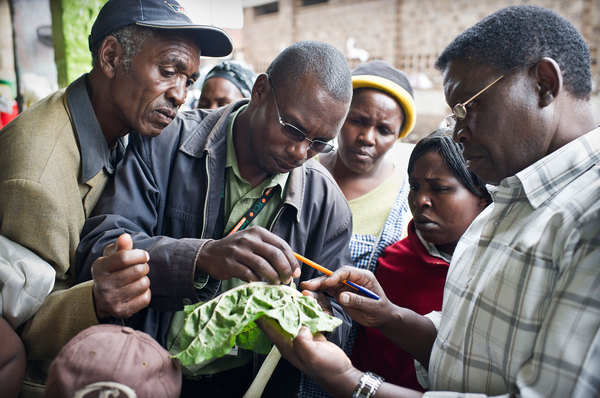Pakistan’s papaya pest squashed through biocontrol
By Saleem Shaikh. Reblogged from SciDev.Net A severe infestation of the papaya mealybug (Paracoccus marginatus) nearly wiped out papaya orchards in Pakistan before the largely farmed country decided to replace conventional chemical pesticides that were ineffective with natural predators that proved to be successful. The system was developed by agro-biotechnologists and entomologists at the Pakistani chapter…
On International Tea Day, raise a cup to the growers
International Tea Day is observed annually on 15 December, and aims to raise awareness of the impact of the global tea trade on the farmers and agricultural labourers who produce tea. It has been celebrated since 2005 in tea producing countries such as Bangladesh, Sri Lanka, Nepal, Vietnam, Kenya, Malawi, Malaysia, Uganda, India and Tanzania…
Our favourite recipes – India
As part of our new mini-series, “Our favourite recipes”, here is the next delicious recipe for you to try from India. Baingan Bharta (Roasted mashed brinjals cooked with onions, tomatoes, green chillies and ginger) is one of the most popular dishes in India. Brinjal (aubergine/eggplant) is an important ingredient of the recipe.
Update: New Pest & Disease Records (17 Nov 16)
We’ve selected a few of the latest new geographic, host and species records for plant pests and diseases from CAB Abstracts. Records this fortnight include a report on new species of aphids of the Macrosiphini tribe from Kazakhstan, the first report of Caryedes brasiliensis preying on seeds of Dioclea violacea in Brazil and the first…
Update: New Pest & Disease Records (02 Nov 16)
We’ve selected a few of the latest new geographic, host and species records for plant pests and diseases from CAB Abstracts. Records this fortnight include new hosts (lettuce and wild rocket) of Fusarium equiseti in Italy, studies on occurrence of entomopathogenic nematodes in India and the first detection of tomato spotted wilt virus (TSWV) on…
“Stop those pests!” – Great Success for CFS43 Side Event
Reblogged from the IPPC blog. The side event was co-organized by the Secretariat of the International Plant Protection Convention (IPPC) and the Department of Agriculture and Water Resources of Australia with a manifold success. The side event was held during the 43rd Session of the Committee on World Food Security (CFS43) on 18 October 2016,…
Tune in to the Cassava show
Last week in the Nkhotakota region of Malawi a new radio show went on air. Not a news programme or a music show, but a show devoted to Cassava. Sounds pretty specific? Well, it’s even more focussed than that. The weekly 30 minute programme is actually focussed on managing one of Cassava’s most damaging diseases…
Update: New Pest & Disease Records (19 Oct 16)
We’ve selected a few of the latest new geographic, host and species records for plant pests and diseases from CAB Abstracts. Records this fortnight include descriptions of two new species from the subfamily Greenideinae (Hemiptera: Aphididae) from Laos, a report on Megachile leaf-cutter and resin bees of Singapore and a report on the host plant of Cercophana frauenfeldii…
A greater role for educational animation in extension?
Blog contributed by Nick Quist Nathaniels, Independent Consultant, Denmark Computer animations are a rather special and exciting communication medium. For example, they can be used to illustrate the basic biology of pests and diseases and explain control measures. Animations are also an effective way to show changes that occur over a long time or at the…
Update: New Pest & Disease Records (05 Oct 16)
We’ve selected a few of the latest new geographic, host and species records for plant pests and diseases from CAB Abstracts. Records this fortnight include a record of Yamatochaitophorus yichunensis, a new species of aphid from northeast China, a report on Rust (Olivea neotectonae) occurrence on teak plants in Sergipe, Brazil and a new record of a…

